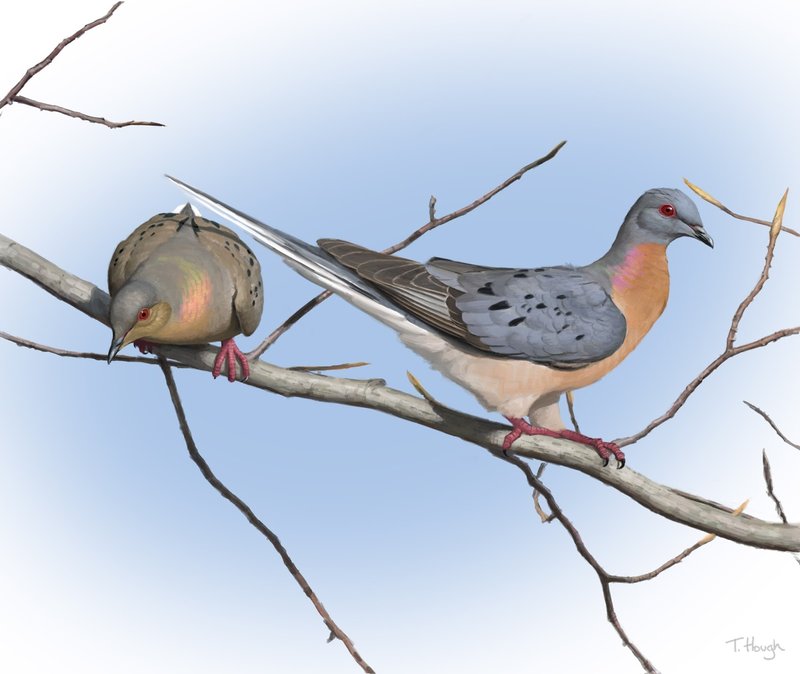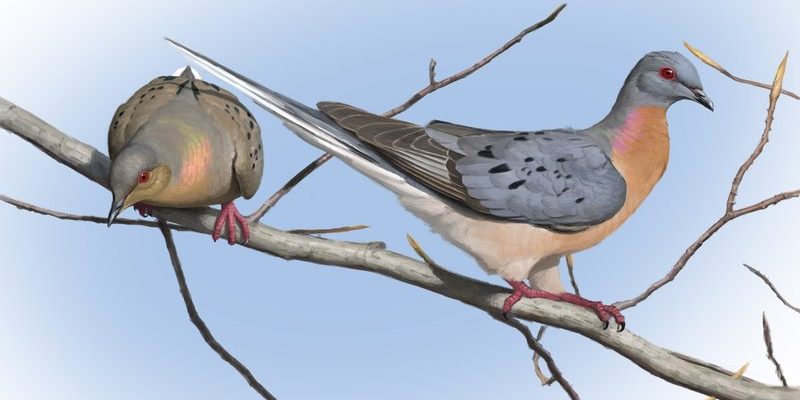
Identifying a passenger pigeon might seem like a tricky task, given that these birds are no longer soaring through our skies. But learning about them is a delightful way to connect with nature and history. Imagine being able to spot birds that share traits with the legendary passenger pigeon, such as doves and other pigeons. This knowledge doesn’t just enrich your birdwatching experience; it also helps reinforce the importance of conservation. So, let’s dive into how you can spot these remarkable birds—metaphorically speaking, of course!
Understanding the Passenger Pigeon’s History
Before you can truly identify a passenger pigeon, it’s essential to appreciate its history. These birds once filled the skies of North America, with flocks so large they could darken the sun. Imagine hundreds of thousands of them flying together—what a sight that must have been! Sadly, due to habitat loss and overhunting, they vanished in the early 20th century.
Passenger pigeons were social birds, often spotted in vast flocks. They made their nests in large colonies, which made them easier targets for hunters. The last known passenger pigeon, named Martha, died in 1914 at the Cincinnati Zoo. Her story serves as a poignant reminder of the consequences of human actions on wildlife. Understanding this background will help you appreciate the significance of identifying similar species.
Recognizing the Features of Related Birds
Now that you’ve got the history down, let’s talk about recognizing birds that remind us of the passenger pigeon. You might be wondering what features to look for. Here are some key characteristics of birds belonging to the pigeon family:
- Size: Passenger pigeons were about the size of a common rock pigeon, around 12 to 15 inches long.
- Color: They had a beautiful combination of blue-gray feathers with a slight reddish hue on their breasts.
- Wings: Their long, pointed wings were built for fast flight, which is helpful when trying to escape predators.
- Behavior: Look for social behaviors and flocking; these birds loved to hang out with their pals!
Familiarizing yourself with these features in their living relatives, like doves or mourning doves, can enhance your birdwatching game. Keep an eye out for these traits when you’re out in nature, and you’ll start to see patterns emerge in the way different birds look and act.
Where to Look For Similar Birds
When you’re out birdwatching, knowing where to look is half the battle. Passenger pigeons used to roam forests, scrubs, and even agricultural fields. So, where can you find birds that echo their legacy?
Start by visiting:
– Forests and Woodlands: Areas with a mix of trees and open space provide the perfect habitat. Birds love to perch and forage here.
– Parks and Nature Reserves: These places often host a variety of birds. Plus, they’re usually more accessible.
– Wetlands and Fields: Doves and pigeons enjoy these habitats, where they can find seeds and other food sources.
Look for their feeding grounds and nesting areas. Birds that are social tend to congregate in groups, so if you spot a few, there might be many more hidden nearby.
Listen for Their Calls
Another great way to identify birds is by their calls. While passenger pigeons are silent today, similar birds have distinct sounds that can give them away.
Mourning doves, for example, have a soft, mournful cooing sound, while other pigeons may have a more varied range. When you’re out in the field, listen for these calls:
– Cooing Sounds: Doves and pigeons often make cooing noises. If you hear a gentle coo, there’s a good chance a dove is nearby.
– Chirping or Whistling: Some birds communicate with sharp chirps or whistles. This can point you to a nearby flock.
Taking a moment to stop and listen can be incredibly rewarding. You’ll not only enjoy the beauty of nature but also sharpen your skills as a birdwatcher.
Using Binoculars to Spot Birds
Once you’re in the right spot and listening for calls, a good pair of binoculars becomes your best friend. Binoculars help you see birds up close without disturbing them. Here’s how to use them effectively:
1. Hold Them Steady: Make sure you have a firm grip. It’s easy for the view to shake if your hands aren’t steady.
2. Scan the Area: Start by scanning the treetops and open spaces where birds are likely to be.
3. Focus: Adjust the focus on your binoculars to get a clear view of details, like feather patterns or colors.
Fun fact: spotting birds through binoculars can feel like discovering hidden treasures in nature! Each little detail can tell you more about the bird’s identity, behavior, and environment.
Conservation and the Passenger Pigeon’s Legacy
Understanding how to identify and appreciate birds isn’t just about enjoying nature; it also ties into conservation efforts. The passenger pigeon’s extinction serves as a powerful reminder of what can happen when wildlife is not protected.
We can honor their legacy by:
– Supporting Conservation Efforts: Participate in local wildlife conservation initiatives. This could be anything from volunteer work to donations.
– Learning About Local Species: Familiarize yourself with your local birds and their habitats. The more you know, the better you can advocate for their protection.
– Sharing Knowledge: Educate others about the importance of wildlife conservation and the lessons from the passenger pigeon’s story.
By learning how to spot these birds—whether they’re the ones that used to soar above us or their living relatives—you’re helping to foster a deeper understanding of wildlife and its importance in our ecosystem.
Wrapping Up the Experience
The journey of identifying a passenger pigeon, while a historical endeavor, opens the door to appreciating the world of birds today. By grasping their characteristics, listening to their songs, and understanding their habitats, you’re more attuned to the natural world.
So next time you’re out in nature, keep your eyes peeled and your ears open. You never know when a beautiful, familiar sight or sound might harken back to the once-great passenger pigeon. Remember, every birdwatching experience adds to your knowledge and helps keep the memory of these extraordinary birds alive. Happy birdwatching!

